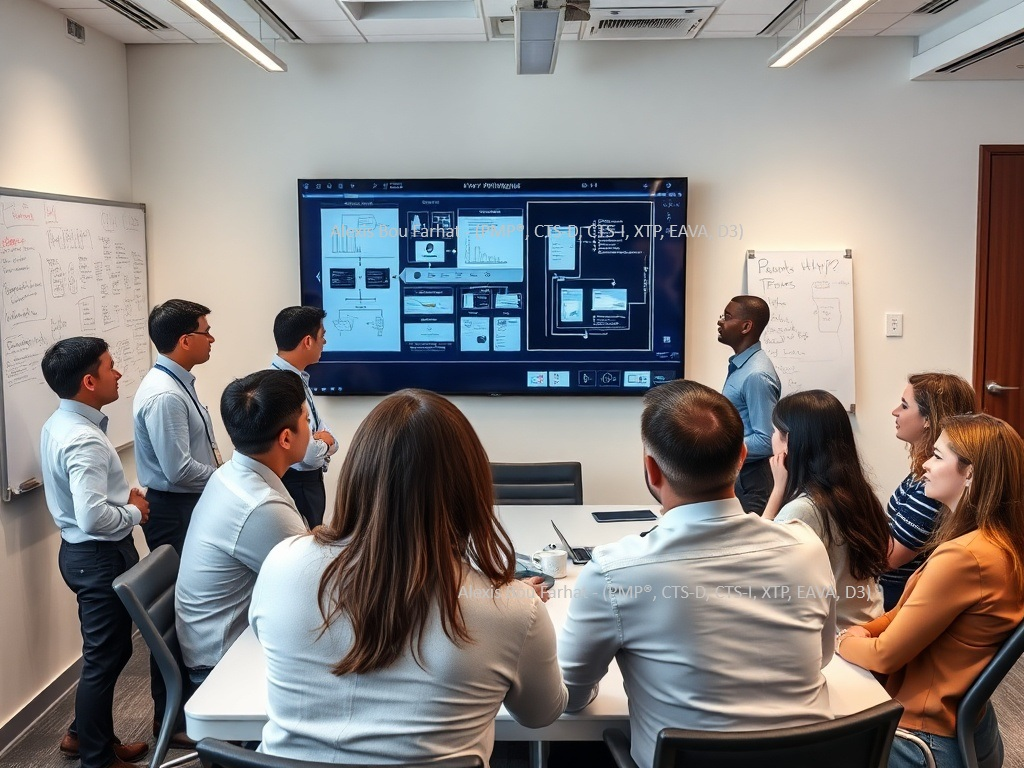LetsTalkAVbyAlexis Series: Episode 4 : Design Begins With People: Engineering AV Systems Around Real End-User Requirements

Welcome back to “Let’s Talk AV with Alexis,” where we break down the realities of AV modern integration.
After exploring the AV Rack Room, AVoIP foundations and Commissioning in previous episodes, we now move to the phase that determines the success of every AV project long before installation begins:
Episode 4: Designing the Right AV System Based on End-User Requirements
A system is only “correct” when it aligns with how people actually work.
Not how we think they work.
Not what the equipment list suggests.
But how end users collaborate, present, communicate and operate on a daily basis.
In professional AV, design begins with understanding people and ends with engineering built around their needs.
.png)
1️⃣ Needs Analysis: The Most Important Step in the Design Cycle:
According to AVIXA/ANSI standards, every project must start with a structured Needs Analysis.
In this stage, we capture:
-
Who the primary and secondary users are
-
What workflows must be supported (meetings, hybrid, training, town halls, command tasks)
-
How content is shared and from where
-
Required VC platforms (Teams, Zoom, BYOD, wireless presentation)
-
Any physical, acoustic, or architectural limitations
Ten minutes with end users at this stage can save months of rework later.
This is where assumptions disappear and real operational needs become the core of the design.
2️⃣ Turning User Insights Into Measurable Performance Criteria
Once user requirements are documented, we convert them into technical design parameters.
Visual Requirements:
-
Display sizes using visibility standards (4/6/8 rule)
-
Luminance vs. ambient light levels
-
Camera FOV and sightline geometry
-
Pixel density for hybrid meeting clarity
Audio Requirements:
-
STI targets for speech intelligibility.
-
Microphone type and placement according to seating layout.
-
Loudspeaker coverage using modeling software.
-
DSP needs: AEC, EQ, dynamics, gain structure.
Network/AVoIP Requirements:
-
VLAN segmentation for UC, control and AVoIP.
-
Multicast (IGMP) design and PTP clocking for audio networks.
-
Bandwidth calculations for compressed/uncompressed streams.
-
Switch capabilities for QoS, jitter control and redundancy.
Control & Automation:
-
UI workflow aligned to user capability.
-
API integration for scheduling, sensors and 3rd-party devices.
-
Logic consistency across all rooms.
Design is no longer conceptual , this stage makes it measurable, testable and predictable.
3️⃣ Engineering the System Architecture
With performance criteria defined, the architecture takes shape:
-
Signal flow design (baseband, AVoIP, or hybrid)
-
Matrix routing and codec selection.
-
DSP topology and channel design.
-
Redundancy (UPS, network failover, PSU N+1).
-
Cable infrastructure (CAT6A, fiber, shielding, distance limits).
-
Thermal load calculations and rack airflow design.
This is where engineering ensures that every signal path is clean, stable and future-proof.
4️⃣ Integrating With the Client’s Ecosystem:
A correct AV design always considers:
-
Enterprise network policies (NAC, DNS, VLANs, firewall rules).
-
Electrical and MEP coordination (power, grounding, lighting).
-
Facilities and operations teams.
-
Existing UC ecosystems (Teams Rooms, Zoom Rooms, SIP endpoints).
AV cannot be designed in isolation, it must integrate with the organization’s digital environment.
5️⃣ Validating the Design Through Commissioning:
A design is only “correct” when it performs as intended in the field.
Commissioning validates:
-
Display clarity and calibration
-
Audio tuning (EQ, delay, SPL, STI)
-
Network stability (latency, jitter, packet loss)
-
Control logic workflows
-
Signal path integrity from source to destination
This is the ultimate confirmation that user requirements were translated into an operational system.
.png)
Final Thought
Great AV design doesn’t start with hardware ,it starts with listening. It starts with workflows, user behavior, functional needs and measurable performance criteria. When design follows purpose, the outcome is always the same: A seamless, intuitive system where the client says: “This works exactly the way we need it.”
And that’s the goal of every AV professional.
Discussion Points for the AVIXA Xchange Community:
1️⃣ How do you capture end-user workflows in your design process?
2️⃣ Do you begin with a full Needs Analysis or jump directly to system design?
3️⃣ What tools do you use to define visual, audio and network performance criteria?
4️⃣ How do you balance user simplicity with technical capability?
5️⃣ What challenges do you face when aligning design with enterprise IT requirements?
-
Xchange Advocates are recognized AV/IT industry thought leaders and influencers. We invite you to connect with them and follow their activity across the community as they offer valuable insights and expertise while advocating for and building awareness of the AV industry.






Please sign in or register for FREE
If you are a registered user on AVIXA Xchange, please sign in
amazing!
I love it!